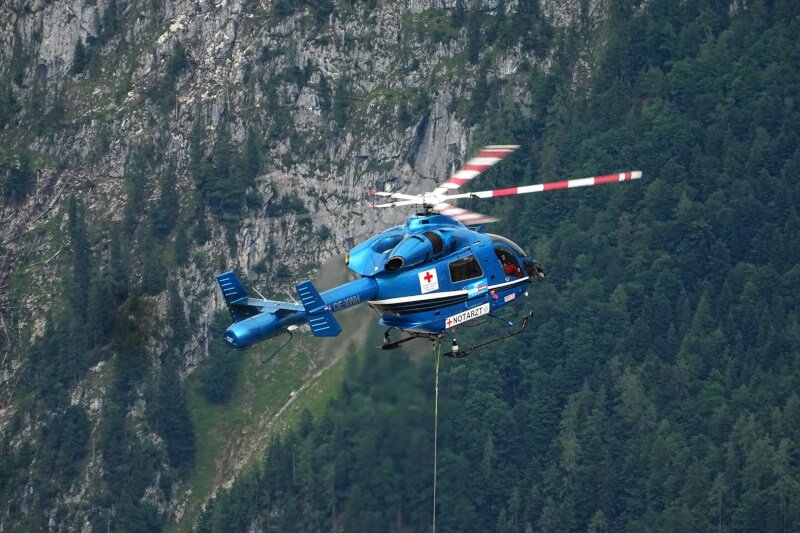Are you an avid remote control helicopter enthusiast looking to perfect your hovering technique? Look no further! In this article, you will discover a range of helpful tips and tricks to enhance your skills and achieve flawless hovering with your RC helicopter. From mastering throttle control to understanding the importance of center of gravity, we will guide you through the key elements needed to elevate your hovering game. So, grab your controller, get ready to take flight, and let’s delve into the world of perfecting your RC helicopter hovering technique!

Understanding RC Helicopter Controls
If you’re new to flying RC helicopters, it’s essential to familiarize yourself with the different controls. This knowledge will lay the foundation for mastering the art of hovering. The primary controls of an RC helicopter include the throttle, pitch, roll, and rudder. Each control has a distinct effect on the helicopter’s movement, so understanding the function of each one is crucial.
Learn about the different controls
Let’s start by diving into each control individually. The throttle control determines the power and altitude of the helicopter. By adjusting the throttle, you can control the speed, lift, and descent of the helicopter. The pitch control, on the other hand, controls the forward and backward movements of the helicopter. Tilting the rotor blades forward or backward changes the pitch, allowing you to move the helicopter in a specific direction.
The roll control is responsible for the left and right movements. By tilting the rotor blades to the left or right, you can control the helicopter’s lateral movements. Lastly, the rudder control controls the helicopter’s yaw, which is the rotation around the vertical axis. This control allows you to change the direction the helicopter is facing.
Practice using the controls individually
Once you understand the function of each control, it’s time to practice using them individually. Start by focusing on one control at a time. For example, practice adjusting the throttle to maintain a stable hover. Experiment with different throttle inputs and observe how the helicopter responds. This way, you’ll become comfortable with each control’s response and gain better control over the helicopter’s movements.
Understand the effect of each control on the helicopter’s movement
As you practice using the controls individually, it’s essential to understand their impact on the helicopter’s movement. Making subtle adjustments to the pitch control, for instance, will result in a slight forward or backward movement. Similarly, using the roll control will cause the helicopter to move left or right. By mastering the effects of each control, you’ll become more proficient in controlling the helicopter with precision.

Mastering Throttle Control
Throttle control is the key to mastering the art of hovering with an RC helicopter. Start with gentle throttle inputs, gradually increasing the power to lift the helicopter off the ground. It’s crucial to maintain smooth and gradual increases in throttle to avoid sudden movements or destabilization. As you lift off, continue adjusting the throttle to maintain a stable hover. Pay close attention to the helicopter’s altitude and make minor throttle adjustments to maintain a consistent height.
Practice throttle control in different flying conditions to build your skills. Try hovering indoors or outdoors in calm and windy conditions. Each environment presents unique challenges and requires adjustments to your throttle inputs. By practicing in different conditions, you’ll become more confident and adaptable in controlling the throttle.
Maintaining Balance and Stability
To achieve a perfect hover, you must maintain balance and stability throughout the flight. Keep a steady hand on the controller, ensuring smooth and consistent movements. Jerky or abrupt control inputs can lead to instability, making it challenging to maintain a stable hover.
Focus on maintaining a consistent altitude while hovering. Keep a close eye on the helicopter’s height and make small adjustments to the throttle as needed. Height control is essential for precision hovering and will help you avoid crashes or unwanted movements.
Be aware of wind conditions and adjust your controls accordingly. Wind can greatly impact the stability of the helicopter, making it drift or tilt. Use small and precise inputs on the controls to correct any instability caused by wind. Over time, you’ll develop the ability to anticipate and counteract the effects of wind on your helicopter.

Controlling Pitch and Roll
Pitch and roll are fundamental controls for maneuvering an RC helicopter. Understanding how these controls affect the helicopter’s movement is vital. The pitch control allows you to tilt the helicopter forward or backward. Mastering small pitch adjustments is crucial for maintaining a stable hover and executing precise movements.
Similarly, the roll control enables you to tilt the helicopter to the left or right. Practice making small roll adjustments to maintain lateral stability while hovering. By using the controls effectively, you can counteract any tilting or drifting and ensure a smooth and controlled hover.
Utilizing the Rudder
The rudder control plays a significant role in controlling the helicopter’s orientation and yaw. Yaw refers to the rotation of the helicopter around its vertical axis. By manipulating the rudder control, you can change the direction the helicopter is facing.
Learn how the rudder affects the helicopter’s yaw by practicing coordinated movements with throttle, pitch, and roll. Experiment with different combinations of control inputs to achieve the desired yaw. This will help you navigate the helicopter in various directions and maintain control during maneuvers.

Developing Spatial Awareness
To become a skilled RC helicopter pilot, it’s crucial to develop spatial awareness. Maintaining visual contact with the helicopter is essential, especially when hovering at a distance. By keeping your eyes on the helicopter, you’ll have a better understanding of its position and be able to make more accurate control inputs.
Practice hovering at different distances and heights to improve your spatial awareness. By challenging yourself with various hover scenarios, you’ll develop a better sense of the helicopter’s movement in relation to its surroundings. Moreover, use landmarks or reference points to help with orientation when hovering. Associating visual cues with specific helicopter positions will enhance your spatial awareness.
Improving depth perception is also crucial for perfecting your hovering technique. Close maneuvers, such as flying towards and away from yourself, can help you develop a better sense of depth. The more you practice these maneuvers, the more refined your depth perception will become.
Building Muscle Memory
Building muscle memory is essential for precise control of an RC helicopter. Regularly practicing hovering exercises is one of the most effective ways to develop muscle memory. Focus on developing smooth and precise movements with the controls. By repeatedly going through hovering drills, your muscles will become familiar with the required inputs, allowing you to execute them effortlessly.
Start with basic hovering exercises and gradually increase the difficulty level as your muscle memory improves. Experiment with different hovering techniques, such as hovering in a confined space or performing figure-eight patterns. The more you challenge yourself, the better your muscle memory retention will be.

Taking Advantage of Simulator Training
Simulator training is an excellent tool for perfecting your RC helicopter hovering technique. Using a flight simulator allows you to practice hovering without the risk of crashing your helicopter. You can benefit from realistic virtual flight conditions that simulate the real-world challenges you may encounter.
Utilize a flight simulator to experiment with different RC helicopter models. This will help you understand the nuances and characteristics of each model, allowing you to adjust your flying technique accordingly. Take advantage of the simulator’s tutorials and challenges to further refine your skills and learn new techniques.
Learning from Experienced Pilots
Learning from experienced pilots can significantly accelerate your progress in perfecting your hovering technique. Joining RC helicopter communities or clubs is a great way to connect with knowledgeable pilots. These communities often organize workshops or training sessions where you can learn from experienced instructors.
Seek advice and guidance from experienced pilots who have already mastered the art of hovering. They can provide valuable tips and insights tailored to your specific needs. Participating in flying events, such as competitions or fun flies, will also expose you to different flying styles and techniques. Observing and learning from others’ flying techniques is a fantastic way to expand your knowledge and skills.
Having Patience and Persistence
Hovering a RC helicopter takes time and practice to master. Understand that it’s a skill that requires patience and persistence. Be patient with yourself and the learning process. It’s normal to experience challenges and setbacks along the way. Remember that every small achievement is a step forward in your journey to becoming a skilled RC helicopter pilot.
As you persevere through challenges, celebrate small achievements along the way. Whether it’s maintaining a stable hover for a few seconds longer or executing a precise maneuver, acknowledge your progress. These small wins will not only boost your confidence but also motivate you to continue improving.
In conclusion, perfecting your RC helicopter hovering technique requires a combination of understanding the controls, building muscle memory, and developing spatial awareness. With dedication and consistent practice, you’ll gradually gain the skills and confidence to achieve a smooth and controlled hover. Don’t be afraid to seek guidance from experienced pilots and take advantage of simulator training. Above all, be patient, persistent, and celebrate the small victories on your journey to becoming a skilled RC helicopter pilot.


